Golf course superintendents are going on the attack in their ongoing battles with the increasingly capricious—and catastrophic—whims displayed by Mother Nature.
By Betsy Gilliland, Contributing Editor
 During last summer’s extended drought, surface temperatures of dormant bluegrass in non-irrigated rough areas registered 126º when taken with an infrared thermometer at Rolling Meadows GC in Fond du Lac, Wis.
During last summer’s extended drought, surface temperatures of dormant bluegrass in non-irrigated rough areas registered 126º when taken with an infrared thermometer at Rolling Meadows GC in Fond du Lac, Wis.
Whether it’s due to climate change or simply being at the wrong end of 100-year cycles, club and resort properties have been subject to drastic mood swings from Mother Nature in recent years. And it doesn’t seem to matter where the properties are located on the map. Golf courses across the country have fought extreme heat and drought, record flooding or devastating winds—and in some cases, a steady barrage from a succession of catastrophic weather events.
Golf course superintendents have found themselves on the front lines in this intensifying battle with nature, and they are learning to adapt to a trend that shows no signs of abating anytime soon.
Drought and About
Changing weather patterns have left many courses, such as Drumlins Country Club in Syracuse, N.Y., grappling with drought conditions in recent years. “In the winter of 2011, we had no snow melt up here,” says Peter McPartland, Drumlins’ Golf Course Superintendent. “Right off the bat, we were into a drought.”
Although the course opened earlier than usual because of the weather (March 1, 2012), drought conditions continued from April through the summer. “July was brutal. Temperatures were in the 90s, and it was hot and dry. We also had no humidity,” recalls McPartland.
“We’re on a hill that gets a lot of wind, so it gets dry really fast,” he notes. “The rough was toast.”
Precipitation levels were 12 to 18 inches below normal, and Drumlins, which purchases water from the city, had to increase its paid water usage. The maintenance staff of the 36-hole property, which includes a private and a public course, also had to determine its priorities to deal with the drought conditions. “We had to evaluate what we were watering,” notes McPartland.
The grounds crew placed more emphasis on the private facility than the public course and focused on greens, followed by fairways and tees. The staff also reduced mowing, raised turf heights and applied extra water at night.
“A couple of guys didn’t work for a couple of weeks because of the lack of mowing,” reveals McPartland. However, he notes, the reduced mowing time gave the crew a chance to tackle other projects such as bunker and tee work.
McPartland, who has worked at Drumlins for four years and as a superintendent in the area for 10, says that while last summer’s drought was the worst he’s ever experienced, the property recovered courtesy of fall rains and cooler temperatures. However, he adds, “if we have another no-snow winter, we’ll be in trouble and have to look for another water source—I hope it was a fluke.”
SUMMING IT UP
- Superintendents should take a proactive approach and have plans in place to deal with extreme weather conditions.
- After a severe weather event, courses must evaluate their circumstances and set priorities to maintain playability or reopen a property as soon as possible.
- Storm patterns can be difficult to predict, so superintendents must be diligent about keeping track of local weather conditions.
Wilting in Wisconsin
Rolling Meadows Golf Course in Fond du Lac, Wis., battled drought conditions as well last summer, when, according to Certified Golf Course Superintendent David Brandenburg, rainfall averages were 6 inches below normal.
The crew took care of the greens first and then turned its attention to the tees and fairways. The maintenance staff also paid particular attention to the efficiency of the irrigation operation, which includes a single-row fairway system.
Because the property uses run-off and well water and has a good pond system for irrigation needs (most of which was built in 1996, when the 40-year-old course was expanded), it did not have to restrict its water usage last summer. But the grounds crew did have to turn to other maintenance tactics. “We dragged hoses to keep the rough area alive,” reports Brandenburg. “We’ve never done that before.”
The maintenance staff spent less time irrigating and mowing the course, and raised the height of the cut to grow healthier turf and let the plants develop longer roots. The grounds department, which relies on retirees to mow the grass, also saved money for fuel and labor with its reduced mowing schedule.
In addition, notes Brandenburg, “We did extra drainage work, because conditions were dry and we had time to do it.” The brightest side of the situation, he added, was that “as bad as the drought was for grass, it was good for business.”
One Wave After Another
Sometimes, there’s no pattern to how severe weather presents itself. “It seems like it’s different all the time,” says Tom Vlach, Director of Agronomy at TPC Sawgrass in Ponte Vedra Beach, Fla.
Drought Conditions
- Prioritize water applications when availability becomes limited.
- Audit the irrigation system to assess its performance and the need for upgrades.
- Build soil moisture during the off-season as much as possible.
- Raise mowing heights.
- Minimize cart traffic.
- Make potassium applications in late summer, to improve winter hardiness.
- Educate the general public, as well as property boards,
committees and ownership, about water management practices.
Two years ago, the home of the Players Championship and PGA Tour headquarters had to contend with record cold temperatures. Then in June 2012, Tropical Storm Debby struck the 36-hole property.
“It was a storm that blew up out of nowhere,” Vlach recalls. “We did not know it was going to be that severe. The system just stalled and sat on us.”
The storm, which dropped 11.5 inches of rain on the course in two days, flooded the famous 17th hole on the Stadium Course, turning it into a true island green. Trees fell down; pine straw beds washed out; water saturated the courses, including the practice facility; and sinkholes developed on Dye’s Valley Course. “It was more of a rain event than a wind event,” Vlach explains. “The trees toppled over because the ground was just so saturated.”
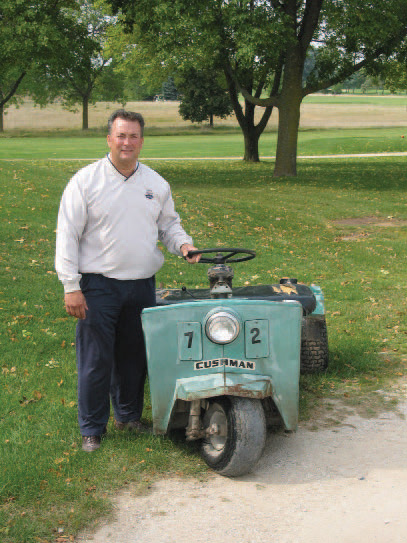 “As bad as the drought was for grass, it was good for business.”
“As bad as the drought was for grass, it was good for business.”
—David Brandenburg, CGCS,
Golf Course Manager,
Rolling Meadows Golf Course
Overall, the property suffered $100,000 in damages and lost only a day’s revenue. Fortunately, the storm hit when the Stadium Course was already closed for aerification.
To not be reactionary when severe weather strikes, Vlach says, superintendents must be “forward thinkers and have contingency plans for all scenarios.” And after any extreme event, getting a course reopened for play is always a priority.
Tropical Storm Debby did prompt TPC Sawgrass to undertake at least one new project, Vlach reports. “It forced us to do a master study of all of our drainage on the entire property,” he says.
Life-Changing Experience
When it comes to getting a course back in playing condition after severe weather strikes, however, some circumstances are more challenging than others. Just ask the folks at Silver Lakes, an Alabama property that includes 27 championship holes and a 9-hole short course, as part of the statewide Robert Trent Jones Golf Trail.
Hurricanes/Tropical Storms
- Fill fuel storage tanks.
- Fill all equipment with fuel.
- Check chainsaws and chains.
- Lower property’s interior lakes in preparation of excessive rainwater.
- Remove flags, sticks and other on-course amenities.
- Back up irrigation and other computer files to flash drives.
- Check chemical and fertilizer storage to ensure products are kept dry.
- Prepare sandbags for low-lying areas of buildings that could flood.
- Remove any trees that appear damaged prior to storm.
- Hurricane-trim all palm trees throughout the summer, to reduce storm debris.
- Update staff contact information.
- Hand out important phone numbers to staff members.
- Develop a “phone tree” to increase ease and speed of communications.
- Place computers on desks and cover them with plastic.
- Check with staff to ensure their personal needs for storm preparation are met.
After devastating tornadoes ripped through the state on April 27, 2011, Silver Lakes, which sits on the edge of the Talladega National Forest between Anniston and Gadsden, Ala., lost about 40,000 trees. The fierce winds leveled the maintenance facility, destroyed golf course maintenance equipment, tore off part of the clubhouse roof, and damaged the pump house and other outbuildings.
“It was quite the event,” says Jason Callan, Silver Lakes’ Director of Golf. “You never expect it’s going to be you.”
The morning began with 80-mph winds that took down 15 trees, and the maintenance staff had to clean up the damage to prepare for a 100-player charity outing that day. The fundraiser went ahead as planned, even though the clubhouse lost power and the food had to be stored in a cooler truck. “One thing after another happened,” Callan recalls.
He left the property at about 4:30 p.m., and started watching Tuscaloosa storm coverage on TV as soon as he got home. Callan quickly called the golf pro and told him to get everyone off the course.
“Golf professionals spend a lot of time looking at radar,” reports Callan. “I know exactly where the golf course is located looking at a map, and it looked like the storm was right on top of it.”
The day following the tornado, the Silver Lakes staff returned to the property to assess the damage. The maintenance crew cleared the cart paths to create an avenue to maneuver around the course.
“We looked at the play areas and realized we needed to clean up the trees that would be harmful to our players,” explains Callan.
Initially, Silver Lakes planned to get one of the 9-hole courses in condition to reopen, until personnel realized the damage was too extensive. The property had no power for two weeks, and the staff got a temporary pump to send water to the main line, so the greens could be watered.
Torando Preparation
- Pay attention to local weather reports.
- Know where your golf course property is located on a map.
- Remove on-course amenities.
- Know when and how to move guests and staff to a safe location.
- Clear cart paths after the storm, so cleanup crews can maneuver around the golf course.
At one point, Callan recalls, “We really weren’t sure we were going to reopen the facility.” But that would have left the Golf Trail without a presence in northeastern Alabama, and officials ultimately decided that was not an option. “The golf courses are located in specific regions of the state to benefit those regions,” Callan notes. “It is huge for tourism and jobs. You have to look outside of golf.”
The property was closed nearly half a year for repairs costing over $3 million. The grounds crew worked out of a temporary tent in the parking lot while the maintenance facility was rebuilt. “Branches were stuck all over the course like missiles,” Callan says. “We needed excavators to get them out.”
The golf courses underwent renovations, including conversion of its bentgrass greens to Champion Bermuda and the addition of bunkers to some holes. No tees or greens were moved, but holes that lost trees were redesigned.
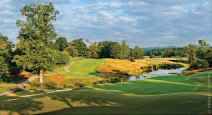
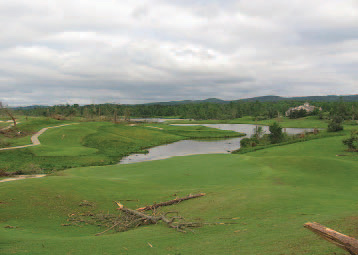 Before (above left) and just-after (above right) views of Hole 8 at the Robert Trent Jones Golf Trail at Silver Lakes show how drastically the landscape was altered by the tornadoes that struck northeastern Alabama in April 2011. In total, the course lost 40,000 trees.
Before (above left) and just-after (above right) views of Hole 8 at the Robert Trent Jones Golf Trail at Silver Lakes show how drastically the landscape was altered by the tornadoes that struck northeastern Alabama in April 2011. In total, the course lost 40,000 trees.
Maintenance equipment—or what was left of it—was taken to the driving range, so vendors could determine which pieces could be repaired and which needed to be replaced.
As part of a company with 1,000-plus employees, the Silver Lakes maintenance crew had plenty of help to get the property up and running again. Vendors and other Trail properties loaned maintenance equipment, and more than 80 people were working on the course at one point. The food-and-beverage staff cooked meals for the cleanup crews every day throughout the summer. “People were able to keep their jobs,” Callan says. “The storm didn’t destroy us.”
While the property lost revenue during cleanup efforts, the losses were not as severe as they could have been. “We were in the middle of the growing season, but summer is not our peak season; spring and fall are,” notes Callan.
The surrounding community, which has 30 to 40 homes on the course that were affected by the storm, rallied around the property. “I think the community got a little closer together and helped each other,” Callan says. “A lot of people from the community volunteered to help.
“When a tragedy happens, it’s how you move forward that matters,” he adds. “It tells you who you are and what kind of character you have. This wasn’t about a golf course. We just happened to be in the middle of it.”
 This is a caption for this image. This is a caption for this image. This is a caption for this image. This is a caption for this image. This is a caption for this image. This is a caption for this image. This is a caption for this image. This is a caption for this image. This is a caption for this image.
This is a caption for this image. This is a caption for this image. This is a caption for this image. This is a caption for this image. This is a caption for this image. This is a caption for this image. This is a caption for this image. This is a caption for this image. This is a caption for this image.


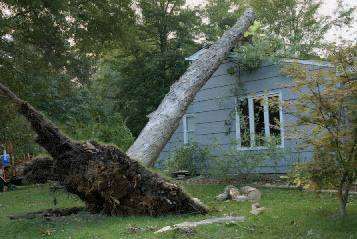
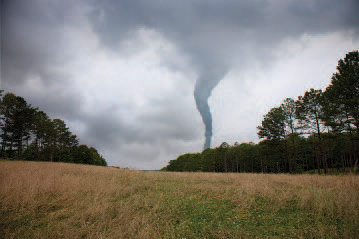




Tell Us What You Think!
You must be logged in to post a comment.